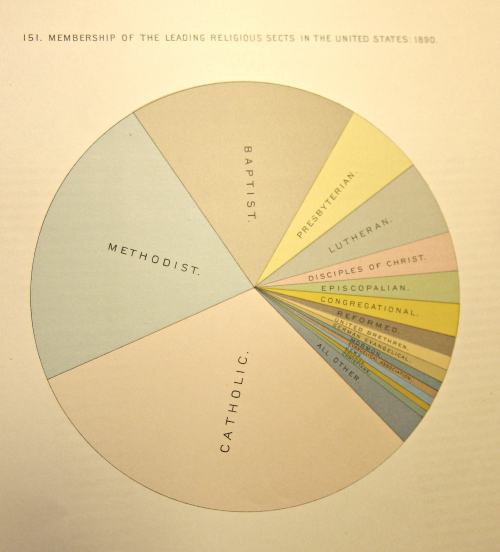JF Ptak Science Books Post 2646
Displayed below is one of the many dozens of graphs/charts/maps created with the data collected for the 1890 and tabulated by William Hollerith's glorious machines. It was the first use of the machines for the U.S. census and they offered a far-reaching and increased ability to tabulate and organize the data. The 1880 census had cost about $6 million and took 9 years to tabulate; the 1890 census using the Hollerith machines cost $10 million and took seven years. The main focus of many in government was the cost differential—not the incredible amounts of new controllable information. The rent of the Hollerith machines was only $750,000 for the conduct of the entire census, so the differential must’ve been in the extra utility costs (for electricity, for example, which was used for the first time to run the tabulators) and for the small army of statisticians and data entry people. Be that as it may, the government was not amused, particularly when Hollerith figured that he had actually saved the government $5 million. The two parties left each other grumbling, though the roar of the trickle down from the Hollerith success drowned it out. The tabulating system was quickly exported, and large private concerns in the U.S. saw a savior in the system that would soon rescue them from the sea of paper in which they were beginning to drown. The Hollerith company did very, very well for itself, and soon merged with three other companies (in 1911) to ease the burden of success. The resulting company was called the Computing-Tabulating-Research Company (CTR), which after a short while became the International Business Machine Corporation (IBM).
The beautiful circle appears on page one and occupies the full 20-inch tall sheet. This could have been more complex, but as it stands it is a very fine piece of the artfully-enhanced representation of data. (As a pie chart the image isn't very old, though the genre is a little uncommon in the 19th century. Pie charts appear at least as early as William Playfair's Statistical Breviary in 1801 and then probably more famously in the work of Charles Minard and Florence Nightengale in the 1850's--this work to me seems cleaner and brighter, and definitely "modern".)




Comments